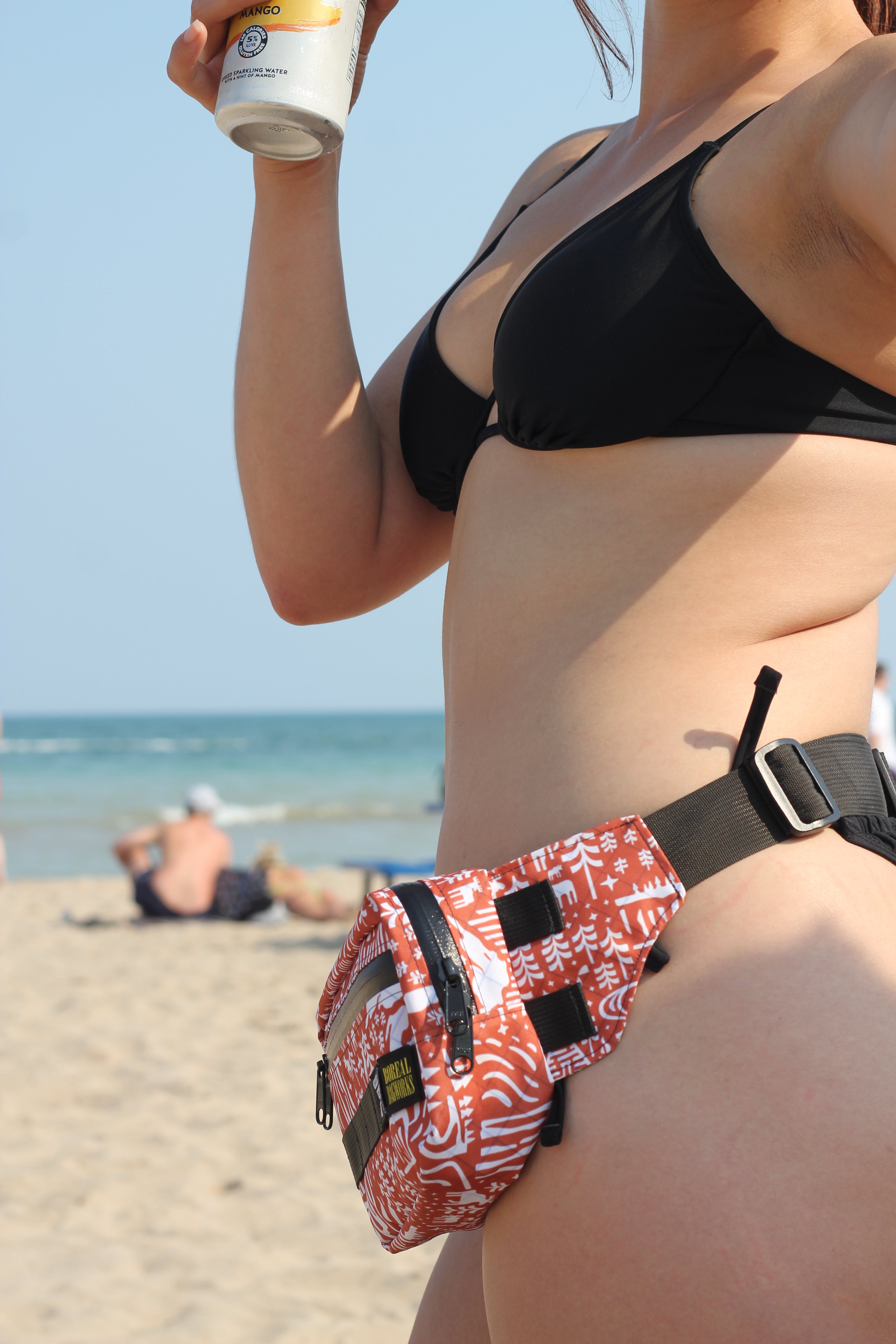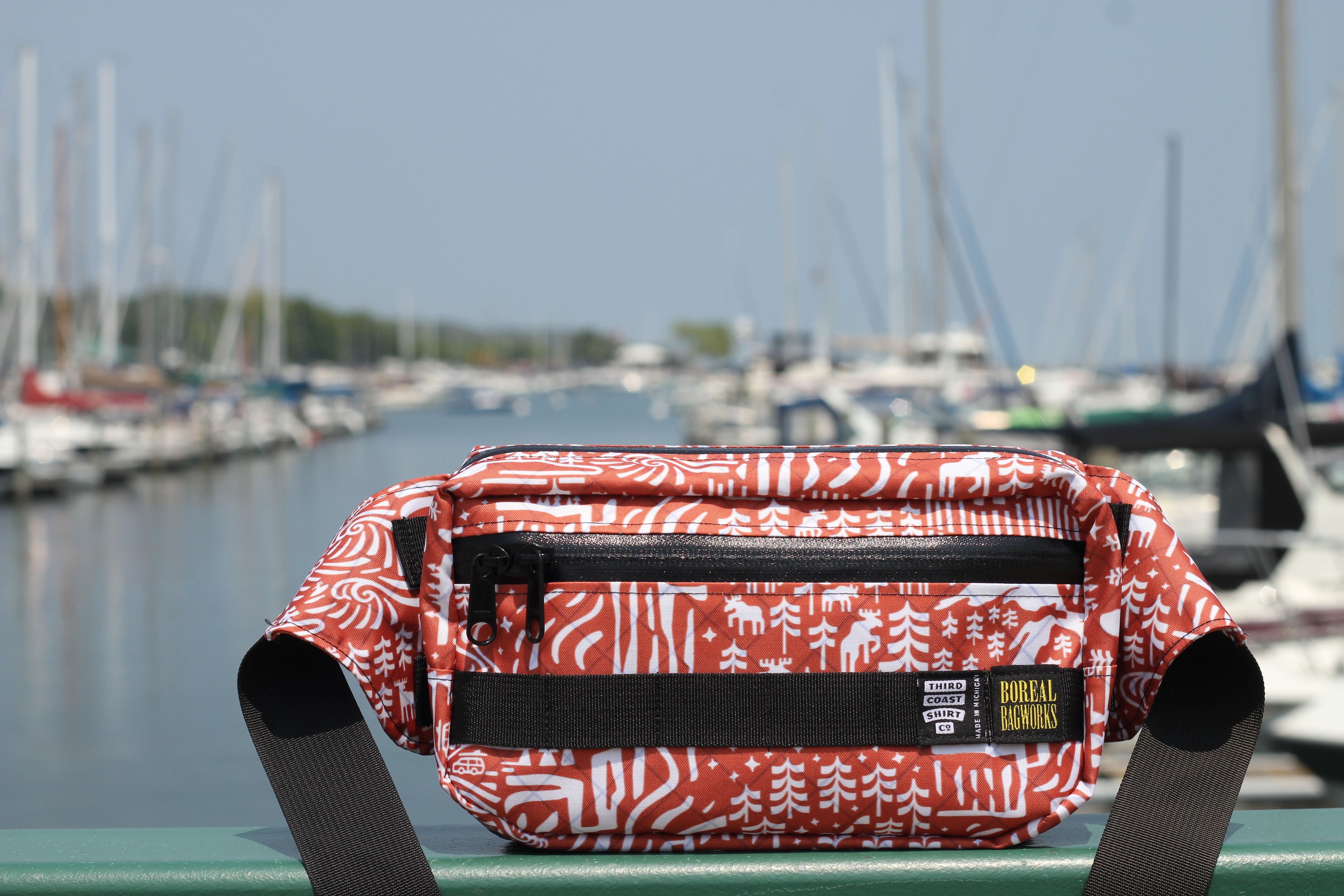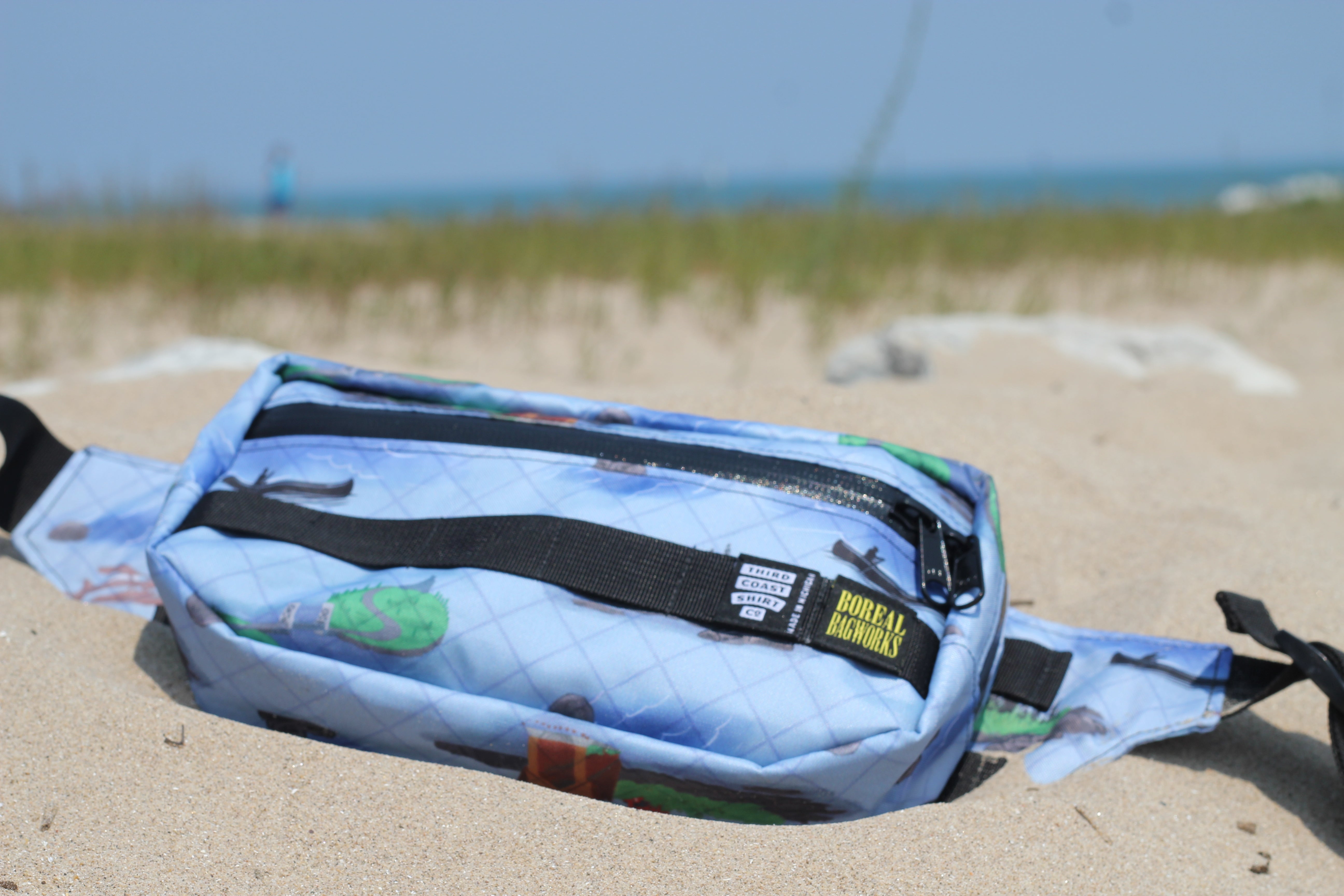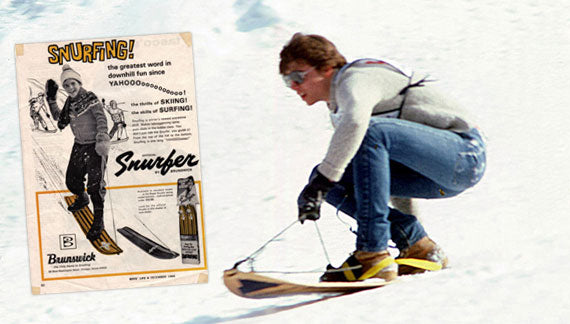
Crash Course: The Great Lakes Origin of Snowboarding
Posted on
Long before the days of Jake Burton Carpenter, Shaun White, or the Winter X Games, a man by the name of Sherman Poppen was building boards to surf atop Lake Michigan sand dunes near his Muskegon home. Now hailed as the grandfather of the sport, this is his story, and the story of the surprising Great Lakes origin of snowboarding.
Origin
As the story goes, it was Christmas Day, 1965. Sherman Poppen, a resident of the midsize lakefront city of Muskegon, Michigan, had an idea to create something revolutionary for his kids. It was a board built from a pair of skis placed side by side and laminated together, allowing the rider to "surf" on hills of snow or sand. This prototype lacked much of the shape and camber of any modern boards. Little did he know it, but this would be a radical innovation in the burgeoning outdoor sports world. Alpine and Nordic skis had existed for at least hundreds of years in some form, as had surfboards, but never before had the two worlds been brought together.
Maybe it took a place like the Great Lakes, where snow and sand converge on an annual basis and various forms of surfing have been attempted (with different degrees of success) for about a century. Regardless, Poppen had something big here, and almost certainly did not fully realize it at the time.
The original intention was for exclusive use on sandy dunes- it happens that there is an abundance of them on the eastern shore of Lake Michigan, in pockets from the Indiana shore all the way up to Michilimackinac. The Snurfer, as he began to call it (snow + surfer) performed so well and was such a big hit with his kids, that Poppen went back to the drawing board to improve its performance on snow. One year later, he patented the Snurfer, and partnered with the Brunswick Corporation and the Cee-J Wholesale Toy Company to mass produce and distribute the board across the US.
 Sherman Poppen with the Snurfer. (denverpost.com)
Sherman Poppen with the Snurfer. (denverpost.com)
Design and Growth
Unlike modern snowboards, the Snurfer used a lanyard attached to the front tip to provide a connection to the board and guide steering. Traction pads added grip for the rider. For the rest of its history, the board would retain most of the characteristics of the straight, shapeless mid-1960s skis on which it was originally built, including camber and rocker shape.
Not long after its patent and mass production, snurfing competitions became an annual event in Muskegon, running from 1968 until the late 1970s. It wasn't until 1977 that Jake Burton Carpenter, a New York-based entrepreneur and outdoor sports enthusiast, picked up his first Snurfer and adapted it into what we recognize today as the modern snowboard. Carpenter added curvature to the shape profile, and in addition to metal edges, this allowed riders to carve and attack much larger and steeper terrain. Rigid bindings were another improve, greatly improving connection to the board, along with turning and braking capability.
 Original Snurfer poster from Brunswick Corporation. (surfdestiny.com)
Original Snurfer poster from Brunswick Corporation. (surfdestiny.com)
Evolution of the Sport
The Snurfer declined in popularity in the 1980s with the rise of modern snowboards on ski hills. However, as of the mid-2010s, in niche communities, the Snurfer has experienced something of a resurgence. Burton has rebranded this original discipline of the sport as "powder surfing", offering a guide for those new to the sport. This resurgence has been most significant in communities with smaller terrain, less access to formal/traditional ski areas, and among those with a DIY spirit. Build-your-own Snurfer kits are fairly common due to the simple design.
One of the biggest upsides to powder surfing is the simplicity of the gear. You can basically get into the sport with a board and some reasonable snow gear (or jeans and a hoodie, if you like). Traditional boards correspond to both Snurfers and modern wood-construction snowboards with metal edges, but foam variants exist as well that theoretically provide a feeling of float similar to surfing on waves.
Similar to to the appeal of simplicity in moving back to fully rigid mountain bikes to maximize fun and challenge on local flatter trails (especially in the Midwest), powder surfing is best on smaller local hills. Like quite a bit smaller, such as your back yard or a golf course- ideally treeless to start.
 Modern Snurfer board. (vintagewinter.com)
Modern Snurfer board. (vintagewinter.com)
Aside from Burton, the Snurfer brand itself continues to sell boards made in Salt Lake City to this day- I'm not sure how closely related they are to the original entity, but Sherman Poppen himself endorsed them. Meanwhile, a number of other local makers have jumped in on the idea that the simplicity of riding without bindings, dedicated boots, or metal edges can make for a wicked time even on smaller terrain.
Notably, in recent years, Sherman Poppen has been hailed as the grandfather of the sport, and he was inducted into the Snowboarding Hall of Fame in 1995. Despite his passing in 2019 (incidentally, the same year as Jake Burton Carpenter), Poppen's legacy obviously lives on through the popularity of snowboarding, which has grown to challenge the Alpine skiing that was totally dominant in 1965. As a pioneer of outdoor sports and an icon of the Great Lakes outdoor scene, we wanted to take the time to briefly tell his story.
Subscribers only: Get our Microadventure Guidebook: Lake Michigan!
Sign up for our newsletter, and receive a detailed guidebook to microadventures [an afternoon or less] around the lake.
Bootjack Sling Pack - Made in Michigan
Bootjack Sling Pack - Made in Michigan
$65.00
$50.00
2 liter hybrid sling bag / fanny pack, recommended for everyday use, hiking, skiing, biking, or whatevering. Holds exactly 3 beer cans in the large main pocket with a phone sleeve on the interior, in addition to a smaller front zip pocket. All zippers are YKK AquaGuard. ECOPAK is waterproof, and this pack is water resistant and tested in moderate rain.
Our Bootjack Sling Pack can be taken directly from singletrack to a beer festival, and that exact scenario is what we designed it for. Finally, the days of duct taping my wallet to my chest and hiding my raincoat behind an unsuspecting brewery's table are over.
This bag is built using sustainable and durable ECOPAK, and made in Michigan.
This is part of our legacy Made in Michigan line from our first year of production, and features Third Coast Shirt Co. branding. Once these are gone, they're gone, at least in their current form.
Made in Michigan
+
Made in Michigan
+
Handmade in Michigan by people who care. These bags are a collaboration with our good friends over at Boreal Bagworks. Check them out!
ECOPAK Construction
+
ECOPAK Construction
+
100% ECOPAK sailcloth exterior and recycled bag cloth interior, with each pack upcycling about 5 plastic water bottles and reducing carbon emissions by 0.25 lbs.
100% recycled film, solvent, and VOC-free adhesive, and PFC-free durable water repellant (DWR) that's non-toxic to humans and doesn't persist in the environment.
Product Care
+
Product Care
+
In the event of spillage or stains, wipe the pack down with a wet rag and use dish soap if needed. Hang to dry. Do not expose to high heat, such as a laundry dryer.
ECOPAK is waterproof and significantly abrasion and tear resistant. Store out of sunlight when possible to prevent fading over the life of the pack.
Fit Guide
+
Fit Guide
+
This pack is one size fits most. The strap circumference is adjustable from 36" to 50" for wear across your chest/back or hips.
0 / 5
(No reviews) No reviews
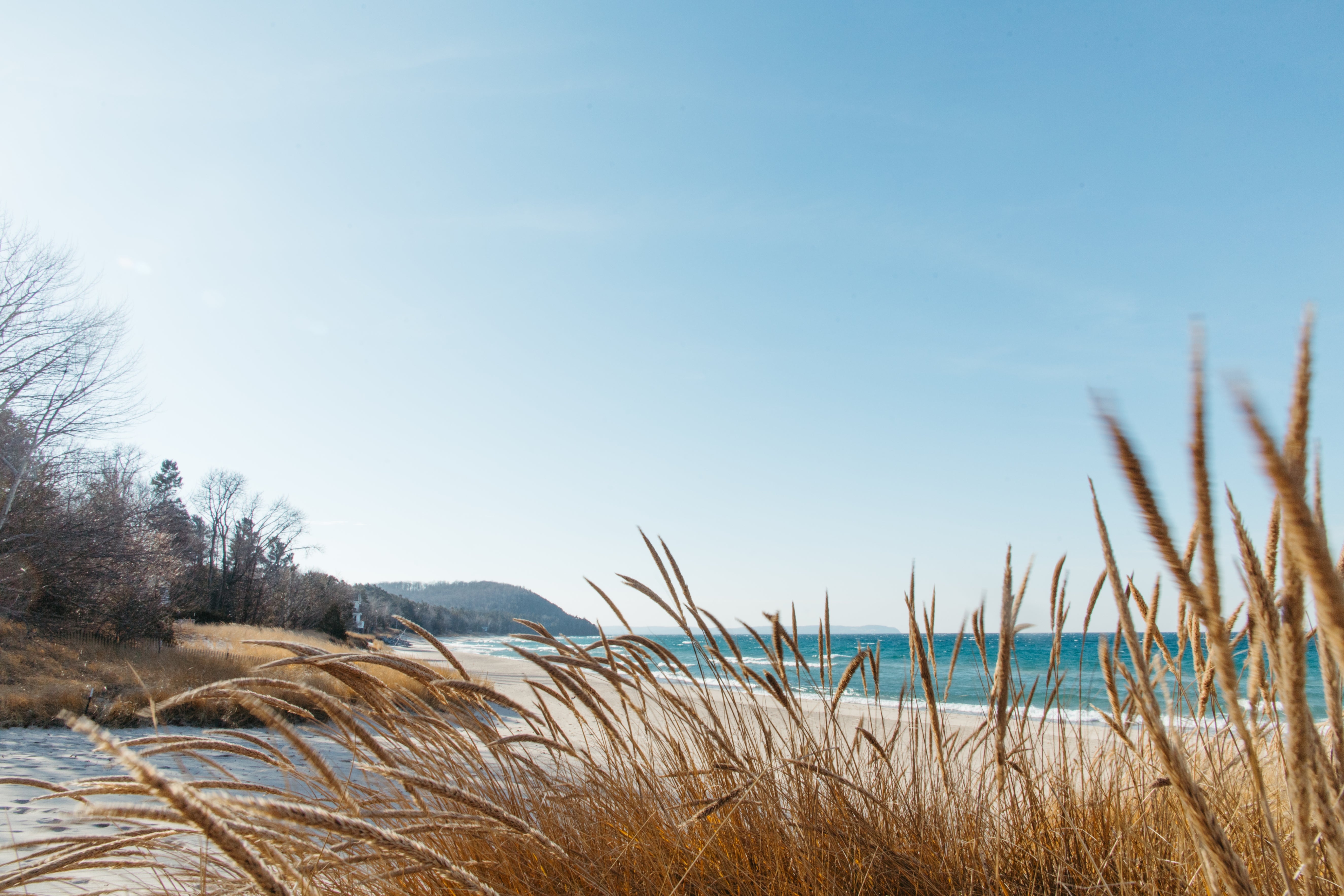
Join us on our mission to Keep the Great Lakes Wild.
Through 1% for the Great Lakes, we're working to protect wilderness areas around Superior, Michigan, Huron, Erie, and Ontario.






